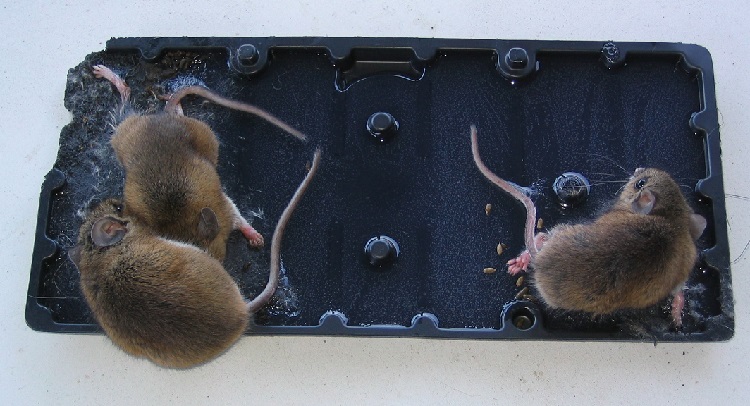My sister lives in a walk-up apartment complex, and the local governing authorities decided to get an exterminator in to deal with their rodent control problem. One of the methods used was to place glue traps on all the windowsills.
Imagine the horror when my sister opened her window one morning to find a beautiful starling caught in the glue trap with its wings horribly twisted from its struggle to free itself from the sticky adhesive. The bird was crying out in distress, and it had already broken one leg in its efforts to rip free.
Glue traps are often toted as an inexpensive and effective method to deal with rodents, ants, cockroaches, and more. My sister can tell you what horror awaits any animal caught in the trap, and these traps are indiscriminate in what animals it traps.
If you’ve ever had to deal with a distressed animal caught in a glue trap, you need to continue reading so you can take action to ban the use of glue traps in your community.
About The Glue Traps
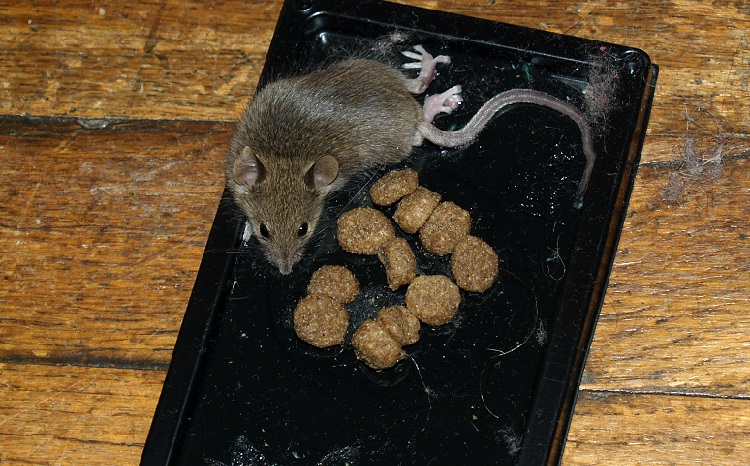
A glue trap is a crude method of trapping animals considered pests for their elimination and removal from the area where they are thought to have become pests.
The trap is made from cardboard, plastic, or other material board coated in a strong adhesive that will attach to any animal, whether it’s the targeted animal or an accidental “catch.”
Glue traps don’t kill the animal caught in them. Instead, these animals need to be disposed of before they suffer needlessly. If an animal is left in a trap, it can take days for them to die of starvation, self-inflicted injury, and exhaustion. Some suffocate when they fall face-first into the glue traps.
Sticky Mouse Traps, Cause of Prolonged Suffering
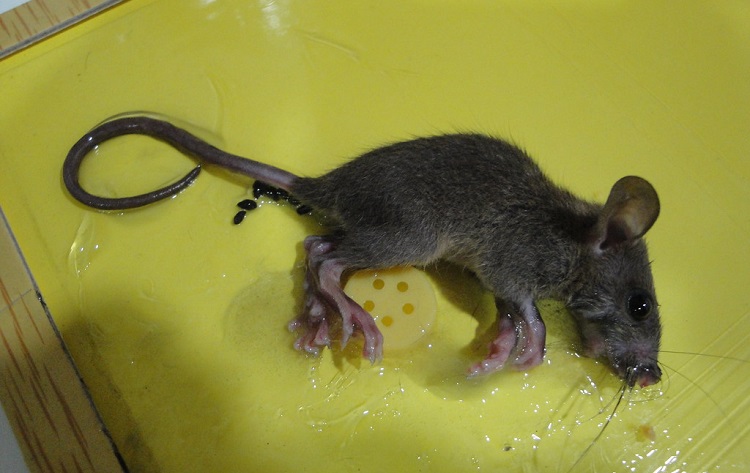
While glue traps are popular for rodent control, these traps are as cruel as snap traps, and often, other animals are caught in the sticky adhesive of the glue board. Glue boards aren’t an effective way to control rodent populations, as rodents breed more when their numbers are reduced.
The extremely sticky adhesive used for glue boards causes long-term suffering and pain to the trapped animals, many of whom use self-mutilation to free themselves from the glue boards.
Once the animal stuck in the glue board can’t get free, it may chew through its own limbs, break bones, or suffer further injuries such as glue burns and ripping off its own skin.
The pain and suffering caused to the trapped animals are unimaginable. Worse still, when left in the trap, these animals stuck in the trays coated with sticky adhesive suffer a slow death. It can take anything from a few hours to several days for trapped animals to finally die from exhaustion, pain, starvation, dehydration, or trauma.
The trapped animals often cry for help and suffer stress, but humans are too squeamish to humanely euthanize the trapped animal, which often means the animal will suffer a prolonged death or be thrown in the trash while still alive. Suffocation is eventually the reason for death, but this is a slow and painful death.
What about animals that manage to free themselves? If the animal pulls free from the glue boards, it may suffer broken bones, bleeding from deep lacerations, or bitten through a limb to free itself.
Glue Traps are Indiscriminate
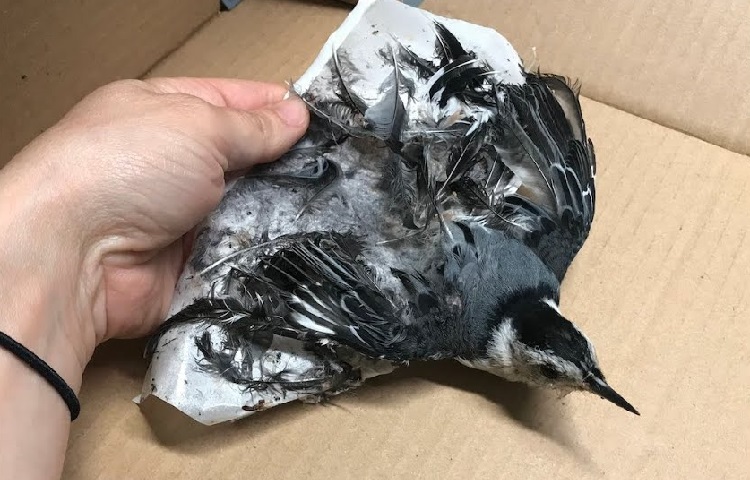
My sister found a starling in the glue trap that had been installed on her windowsill, and her neighbor found several geckos. The traps around their building caught more animals that were not the intended “prey” of rats or mice. Glue traps are in-discriminant.
Glue traps aren’t humane traps at all. These sticky boards coated with adhesive will attach to any animal and even children, causing immense suffering and pain.
Far from offering a quick death, these traps, which are so easily bought at hardware stores and online shops, lead to immense suffering and trauma to both the trapped animal and the person who finds them.
Larger animals, like birds and snakes, become trapped when they try to catch the insects caught on the glue boards, and even frogs can become stuck. The chances that these animals will survive without help are unlikely.
If you use a glue trap, it’s your legal responsibility to either release the animal or effect a swift and humane death. Simply throwing a glue trap in the trash or drowning the animals caught in the trap are unacceptable solutions, and you could face criminal charges.
Once this information came to light, and because the apartment building’s residents wrote strong letters to the management, the glue traps were thankfully removed, and live traps were instead used to trap the rodent populations in a more humane way.
Are Glue Traps Inhumane?
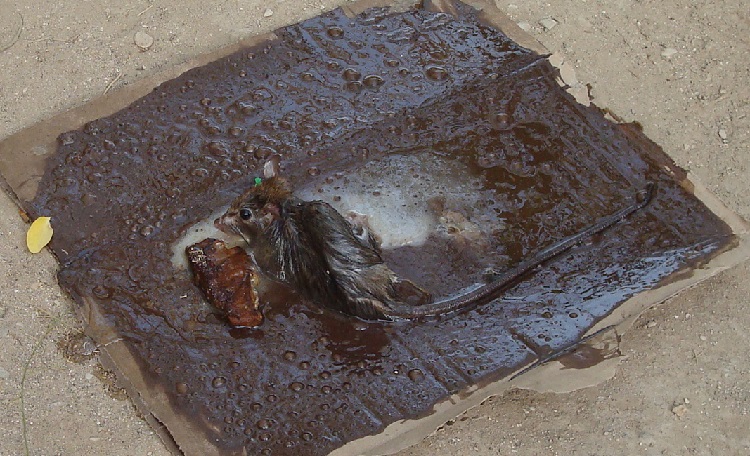
Glue traps are absolutely inhumane.
Firstly, these traps don’t kill the animal swiftly once they are stuck in the trap. Secondly, these animals are often left to die a prolonged death with great suffering.
Thirdly, the average untrained individuals who use glue boards don’t realize they will have to kill the animals caught in the traps or release them, which leads to confusion and an even more painful death when people don’t know how to kill or free the animals effectively.
Are Sticky Mouse Traps Poisonous to Humans?
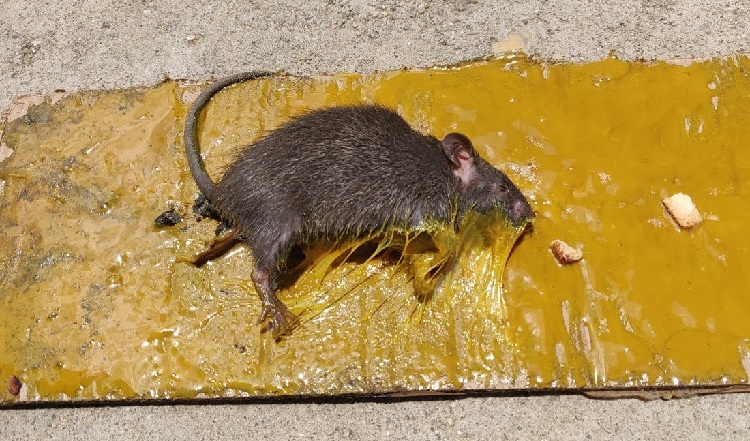
There is little regulation on what chemicals can be used in glue boards, so it’s very likely that exposure to these traps can be toxic to humans. At the least, an allergic reaction may happen on skin contact.
Another way these traps can be poisonous to humans is through exposure to the feces and urine produced by animals trapped in these trays filled with glue. These animals continue to defecate, often at an increased rate, because of panic.
When trying to free animals caught in the traps or when killing animals such as rodents, humans may be exposed to the bacteria and toxic components of these animal wastes.
Do Sticky Mouse Traps Work
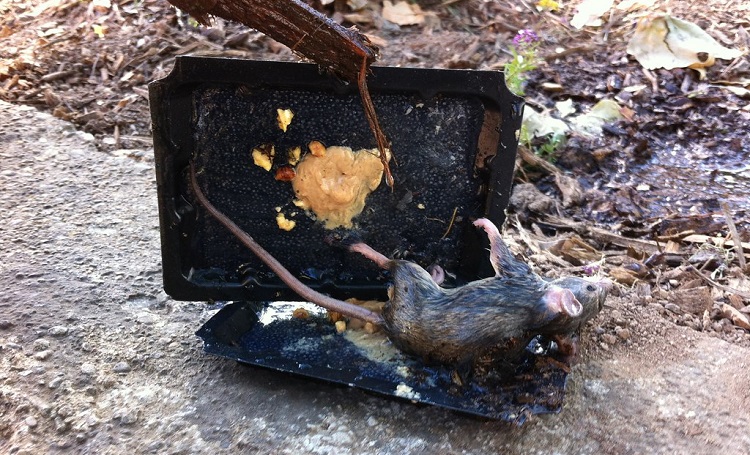
Sticky traps don’t work. Not only do these traps catch more unintended animals than the target mouse population, but these traps also become costly to purchase as the glue only remains tacky for a limited time.
Without addressing the reason why you have a rodent problem, you will continue attracting new rodents, even after these traps have “caught” the rodents you currently have.
A far more effective approach to rodent control is to close up access points to your home, remove any food sources that may lure these animals to your home, and then catch the remaining population in humane live traps.
Treat Rodents Kindly
Rodents are part of the food chain, and while we have a deep ambivalence toward these animals since they can carry diseases, they are useful in nature.
When you live trap rodents and release them back into nature, you leave the food chain undisturbed as hawks, owls, and cats can continue preying on these animals that are their main source of food.
No matter how you feel about rodents, I believe we should treat them kindly. Rodents are highly intelligent animals who feel pain when stuck in a trap. There are other ways to catch and release rodents. Glue traps are not a long-term solution that offers an effective approach to removing rodents from your home.
What To Do With a Mouse on a Glue Trap?
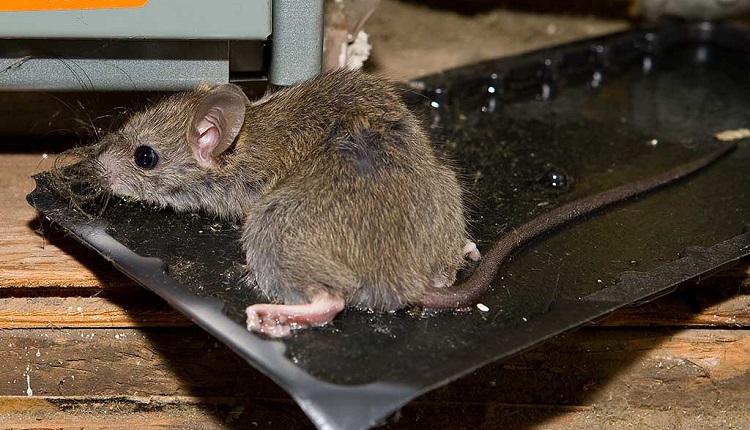
What the packaging doesn’t tell you when you buy a glue trap or glue boards from the local stores is that when an animal becomes stuck in the trap, it’s up to you to either free the animal or kill it humanely.
I know that I couldn’t kill an animal with a blow to the head, and I wouldn’t want to inflict pain to free an animal from a trap that could have been avoided.
To kill an animal that you want to get rid of, you will need to risk additional injuries to the animal and new injuries to yourself by repositioning the animal and killing them with a swift blow to the head. Drowning the animals isn’t acceptable, but I am horrified by the methods some people use to kill animals in a glue trap.
Animals may even be crushed to death in garbage trucks, and suffocation often happens when the animals are thrown in the trash or fall stuck face-down in the glue.
When you want to release the animal, if it appears unharmed, you will have to take precautions so they don’t bite or injure you. Waiting for a professional like the parks board or an animal rescue organization may not always be possible. So here’s what to do:
- Wear thick gloves to minimize the risk of being bitten or scratched, as a scared animal is dangerous.
- Place a towel over the animal to help calm them and stop them from struggling, as extreme exhaustion can lead to death quickly if they struggle while you help them.
- Use cooking oil or baby oil to gently massage into the areas where the animal is stuck on the glue board.
- Free their limbs one at a time, using a towel to keep the animal from trying to run off.
- Once the animal is freed, inspect them, and even if the animal appears unharmed, you should take them for veterinary help as oil coating may cause a risk of hypothermia, and they will need to be washed (and their coats or fur don’t dry quickly).
Sales, Manufacturing, and Regulations of Rodents Glue Traps
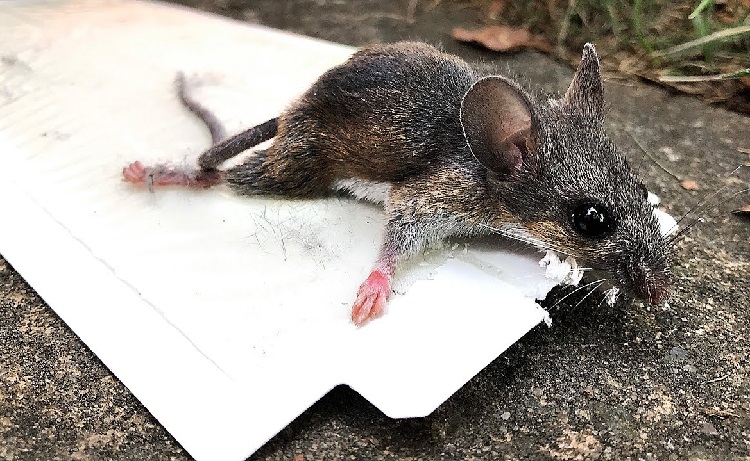
Sadly, glue traps are available in most hardware stores, online, and in several smaller stores. A few countries, such as Ireland, Norway, Iceland, and the Netherlands, have banned the sale of glue traps, which is a step in the right direction.
Speak to your local store manager about prohibiting the sale of glue boards as a “cheap” pest control method.
Petition your local legislators to lobby for a ban on glue boards and insist that better instructions are provided with glue boards so users are better informed.
FAQ’s
Do Glue Traps Kill the Animals?
Glue traps merely inhibit movement, causing the animal to struggle, and finally, they may die of exhaustion and suffocation.
How To Humanely Kill the Mouse?
The most humane way is to kill a mouse with a blow to the head.
How Long Does It Take a Mouse To Die on a Glue Trap?
Animals stuck in a glue trap may take anywhere from an hour to several days to die.
What Happens to Animals Caught by Glue Traps?
These animals face prolonged and painful death from exhaustion, suffocation, and starvation. When they manage to escape, they often suffer a painful death afterward from their injuries.
What Should You Do if You Encounter Rodents in Your House?
First, eliminate the cause of rodent presence. Remove food sources, feed pets indoors, don’t leave pet food around, and close access points where rodents can enter your house. When their food source is eliminated, the rodents will move elsewhere.
Conclusion
Glue traps and glue boards should be banned as these are torture devices that don’t help with rodents and pest control. Most people who use these are misinformed, believing the boards kill the animal stuck in the glue, and they aren’t prepared to kill an animal that will cry for help.
Sticky rodent traps are inhumane, and you should help local animal rights activists lobby to prohibit the sale of these products.


